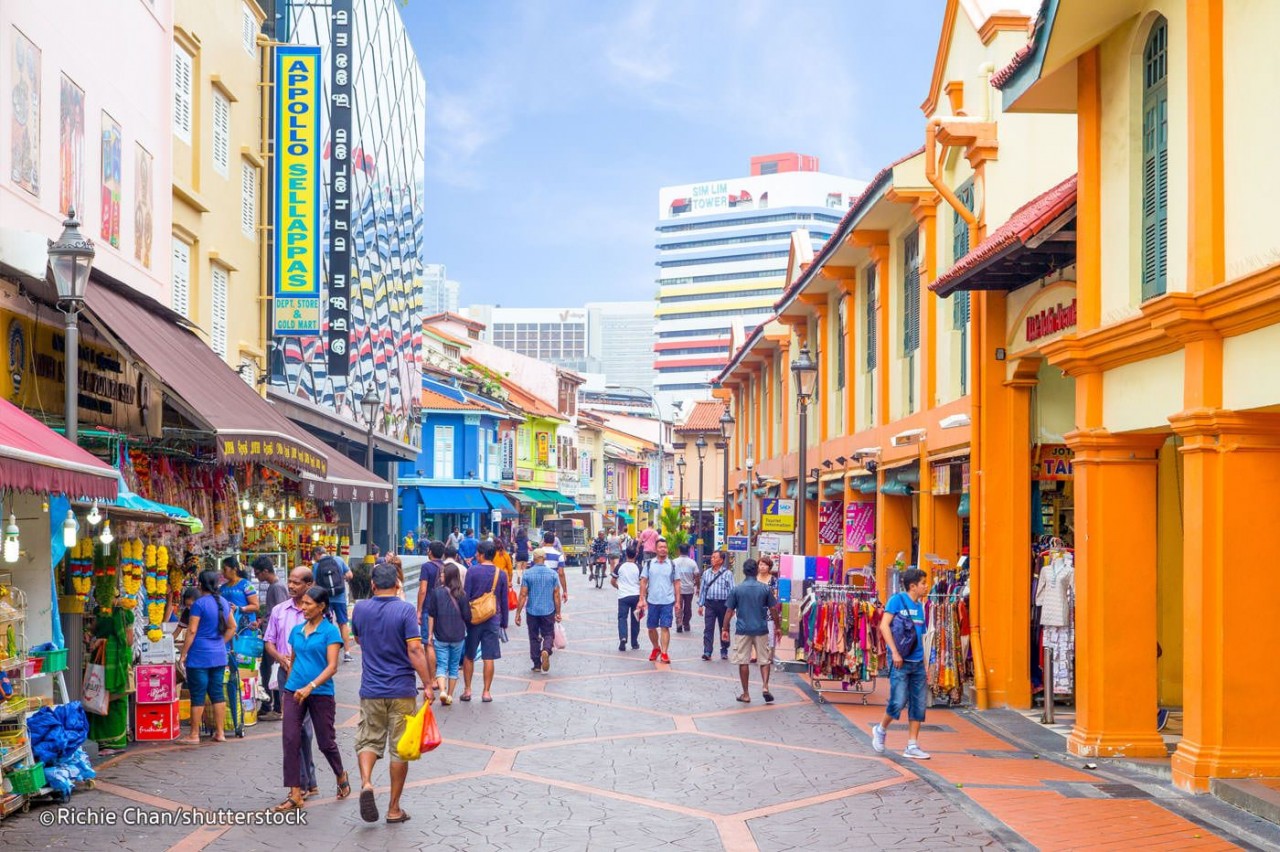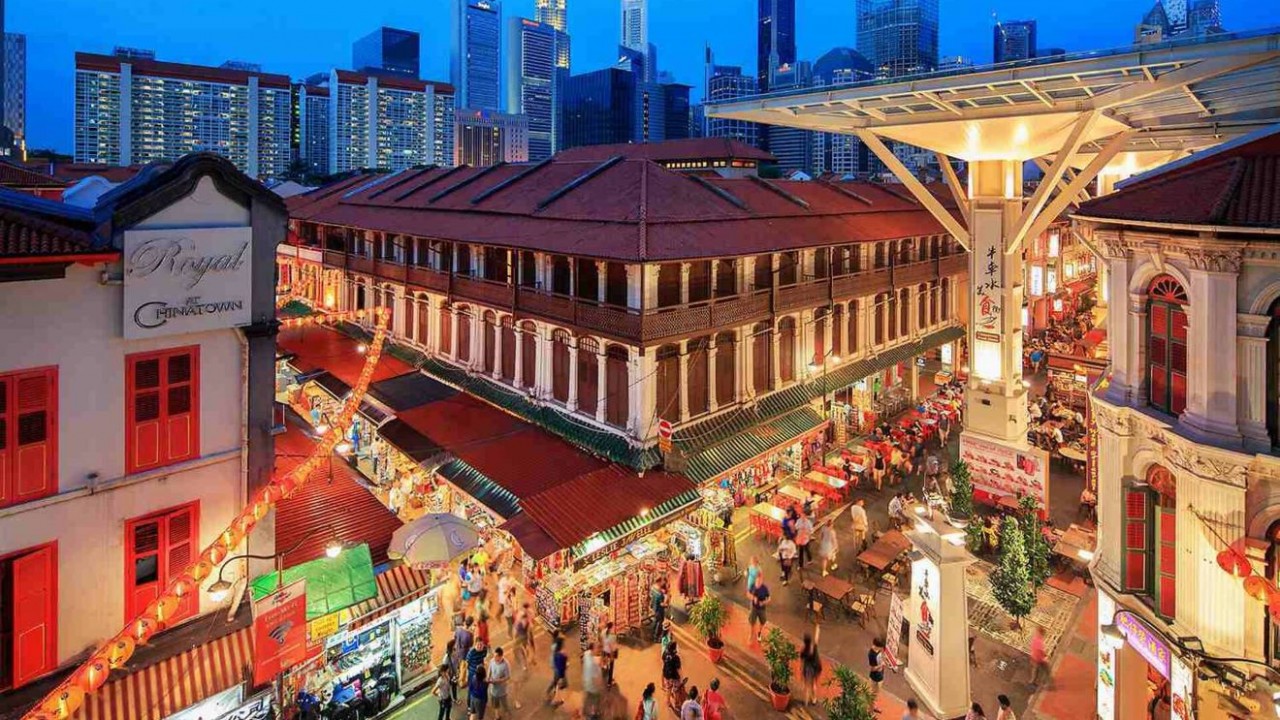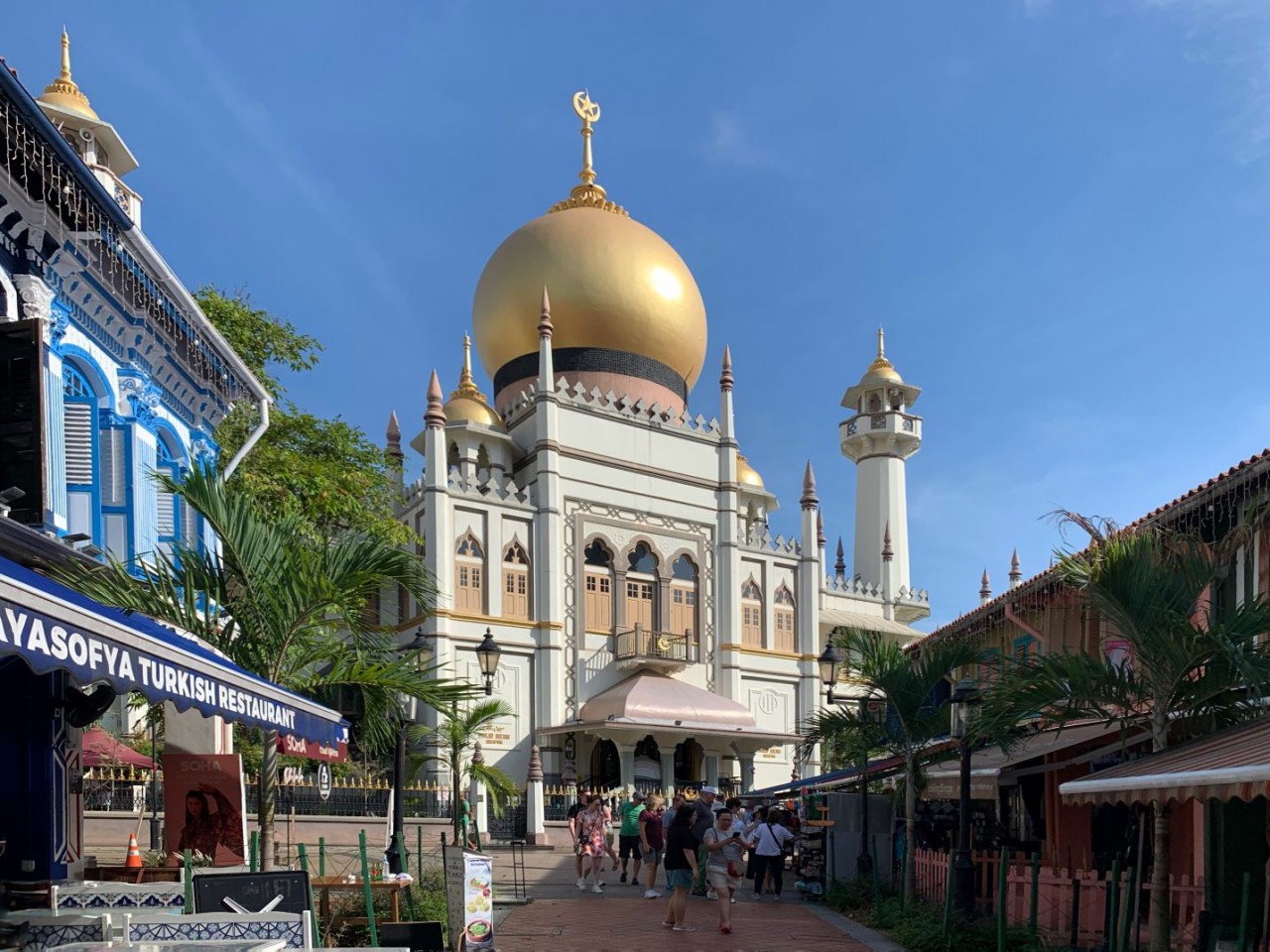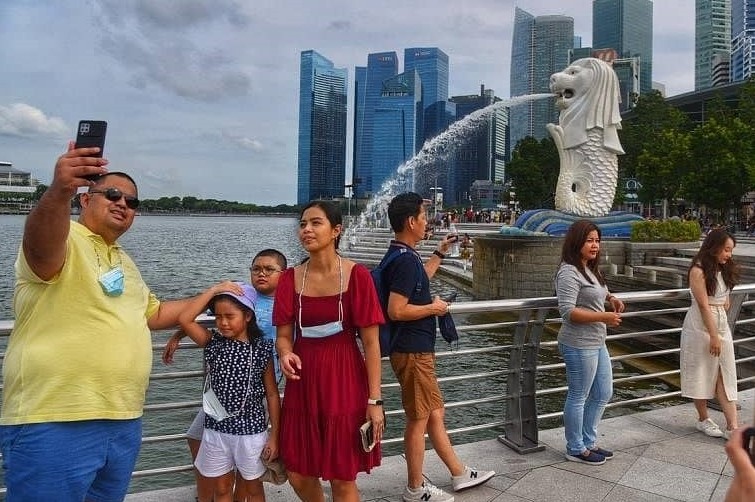
Singapore's multi-ethnic culture
Latest
On an expedition on January 29, 1819, Mr. Thomas Stamford Raffles (1781-1826), the Lieutenant Governor of the British colony in Bencoolen, set foot in Singapore. After surveying and realizing the island's significant developmental potential, he persuaded the ruling Johor Sultan to allow the British East India Company to establish a port for the free trade activities of merchants, opening a new chapter in the history of the Lion Nation''s development.
With the establishment of a trading hub, Singapore - once a small fishing village - quickly attracted immigrants and traders from China, the Indian subcontinent, Indonesia, the Malay Peninsula, and the Middle East. Over time, the tiny island nation gradually formed many distinctive neighborhoods for residents from all over the world to live in, bringing their native cultures to create an incredibly unique multi-color cultural tapestry.
 |
| Little India, vibrant with colors in Singapore. (Photo: Shutterstock) |
Most notably is Little India - the "Heart" of India within Singapore, which impresses visitors with its brightly colored streets, paintings depicting the community's daily life, and cultural landmarks rich with Indian tradition. Particularly, along Serangoon Road shopping district, visitors can not only see traditional Indian garments but also catch the distinctive scents of the "world's spice empire."
As you walk through this bustling neighbourhood, you’ll find places of worship with beautiful architecture and interiors, from the Corinthian pillars of the Abdul Gafoor Mosque to the fifteen-metre-tall Buddha statue in the Temple of a Thousand Lights.
Visitors to Little India should not miss the opportunity to visit the Veeramakaliamman Temple, the oldest temple in Singapore typical of Hinduism. Built by Indian pioneers in the 19th century, the temple is dedicated to the worship of the fearsome goddess Kali and is home to statues that date back to the 1930s. A remarkable structure with attractive architecture both outside and inside, hundreds of vibrant statues captivate visitors' attention.
The Indian markets are quite filled with Indian music played throughout the day. If you visit Little India during the Deepavali or Thaipusam festivals, you will experience an even busier atmosphere with lots of colors, decorated lights on the streets, and the devoutness of the people.
 |
| Chinatown, deeply imprinted with Chinese culture in Singapore. (Photo: Singapore Tourism Board) |
Lovers of culture looking to immerse themselves in Singapore’s rich, multi-ethnic culture will find no better place than Chinatown. This beautiful district is the only Chinatown in the world to boast a Buddhist temple, mosque and Hindu temple along a single street.
Chinatown is an old quarter home to the Chinese community, with architecture, heritage, lifestyle, and cuisine that bear the cultural values of China. The neighborhood still preserves ancient architectural constructions like temples, shrines, shops, and Chinese museums.
Noisy, chaotic, and full of human traffic – that’s the general consensus of what the Chinatowns of the world are like. Singapore’s is no different, but beyond being just a tourist hotspot, it also possesses a charming air that appeals to even the most seasoned locals as well.
The most striking feature of the streets is the red lanterns, decorated everywhere, making you feel as if you are walking in a famous Chinese quarter in countries around the world. Chinatown is most beautiful during the Lunar New Year celebrations. Activities like dragon dances, lion dances, and traditional games are organized everywhere, with people coming here to shop and enjoy, creating a typical scene of the Chinese community in Singapore.
 |
| Masjid Sultan, as it is also known, is a prominent mosque in Singapore. (Photo: Wikipedia) |
Moreover, visitors can stop by the Arab Quarter on Kampong Glam heritage road, rich in cultural value, where the Muslim community lives. The Arab Quarter is decorated in a traditional Middle Eastern and Islamic style. The colorful and picturesque street is filled with shops, quaint eateries, and stalls. Here, a variety of fabrics, accessories, and jewelry for Muslim women are sold. Visitors can find distinctive items like embroidered goods, gemstones, handbags, or natural oils and perfumes in this neighborhood.
Visitors to the Arab Quarter cannot overlook the majestic beauty of the Sultan Masjid (Sultan Mosque). With its impressive golden domes and vast prayer hall, this mosque is one of the most striking religious buildings in Singapore and is a cultural center for Muslims on the island.
Not only renowned as one of the world's cleanest and most beautiful countries, but Singapore also enchants tourists with its unique cultural intertwinements. Hence, the "multi-racial" country at the heart of Asia is always an attractive choice for travelers eager to explore different cultural layers.
















